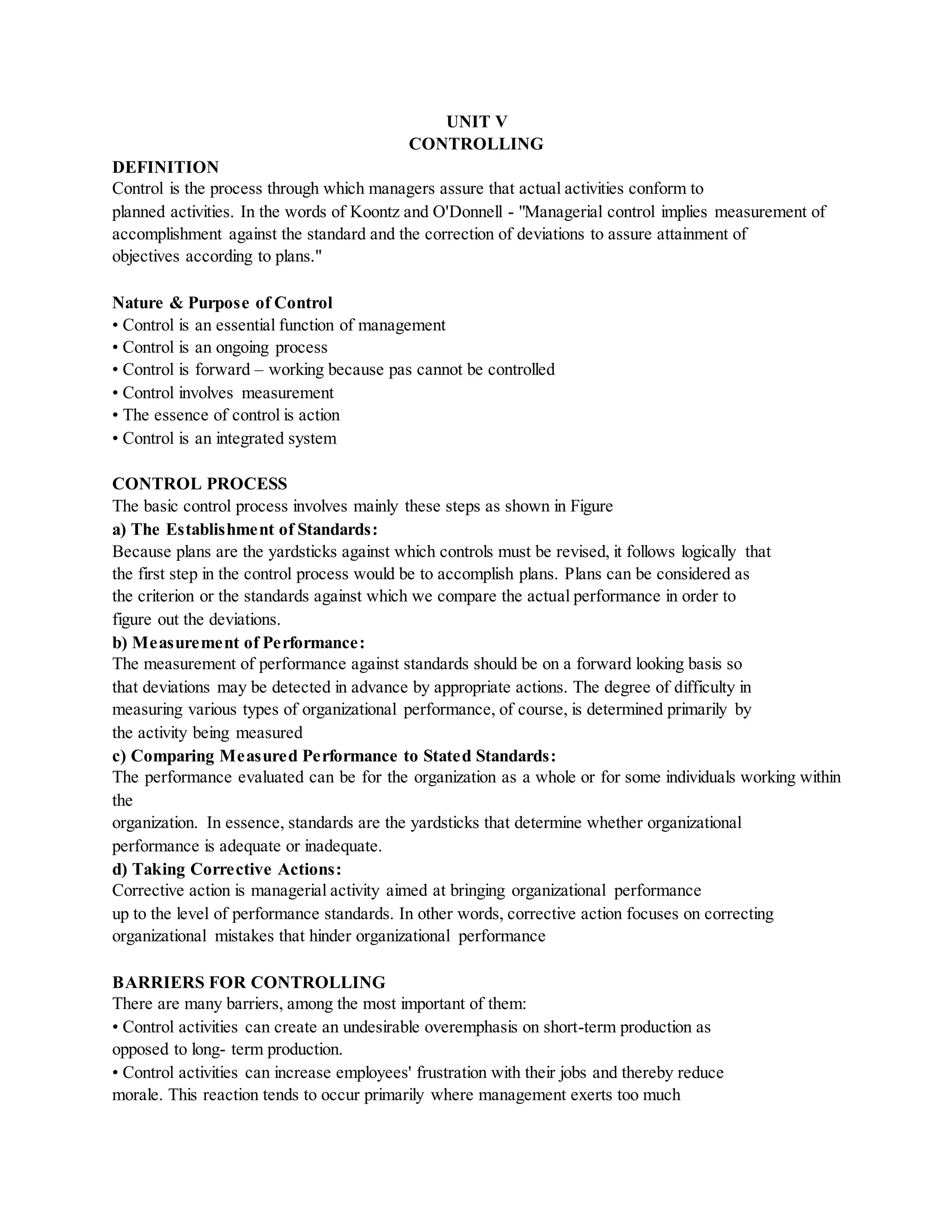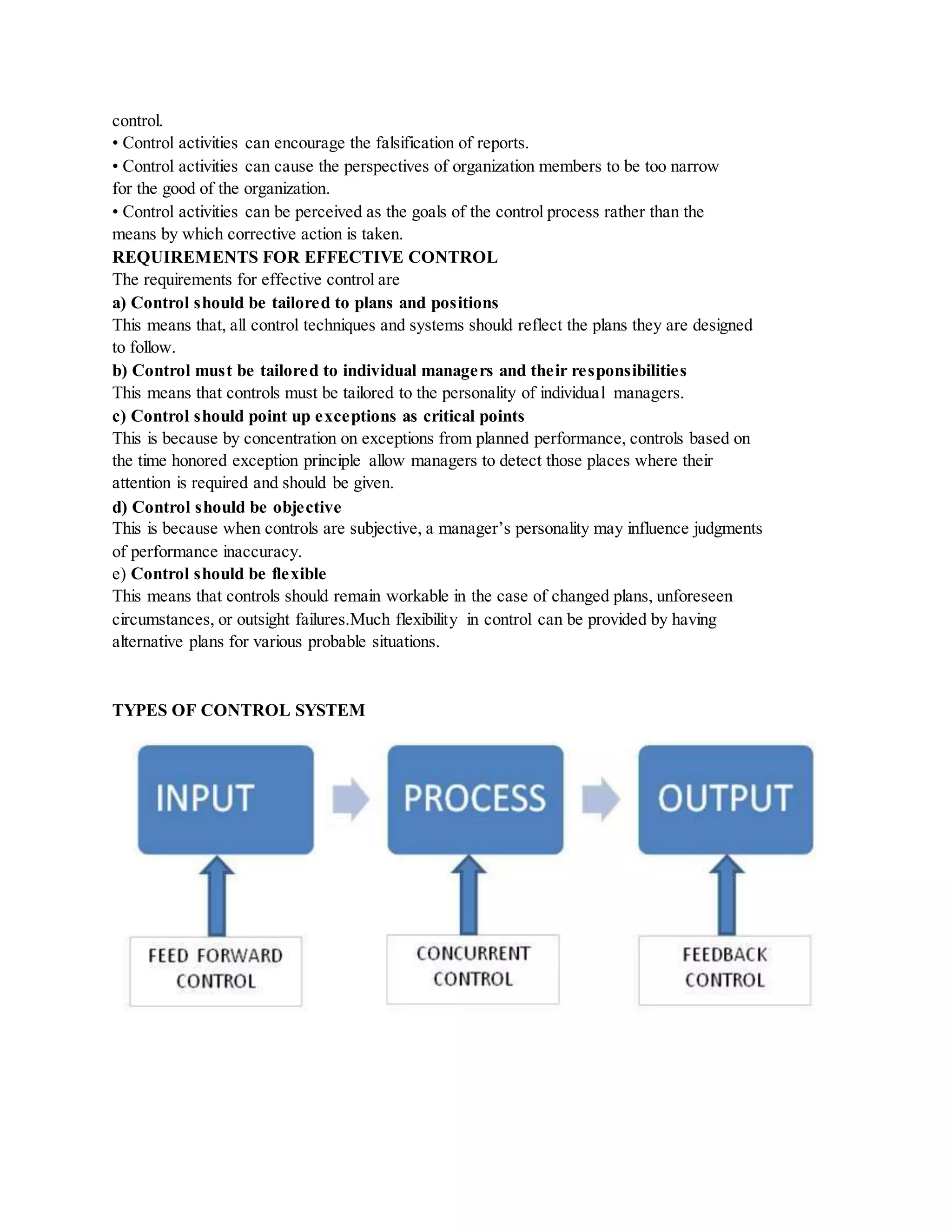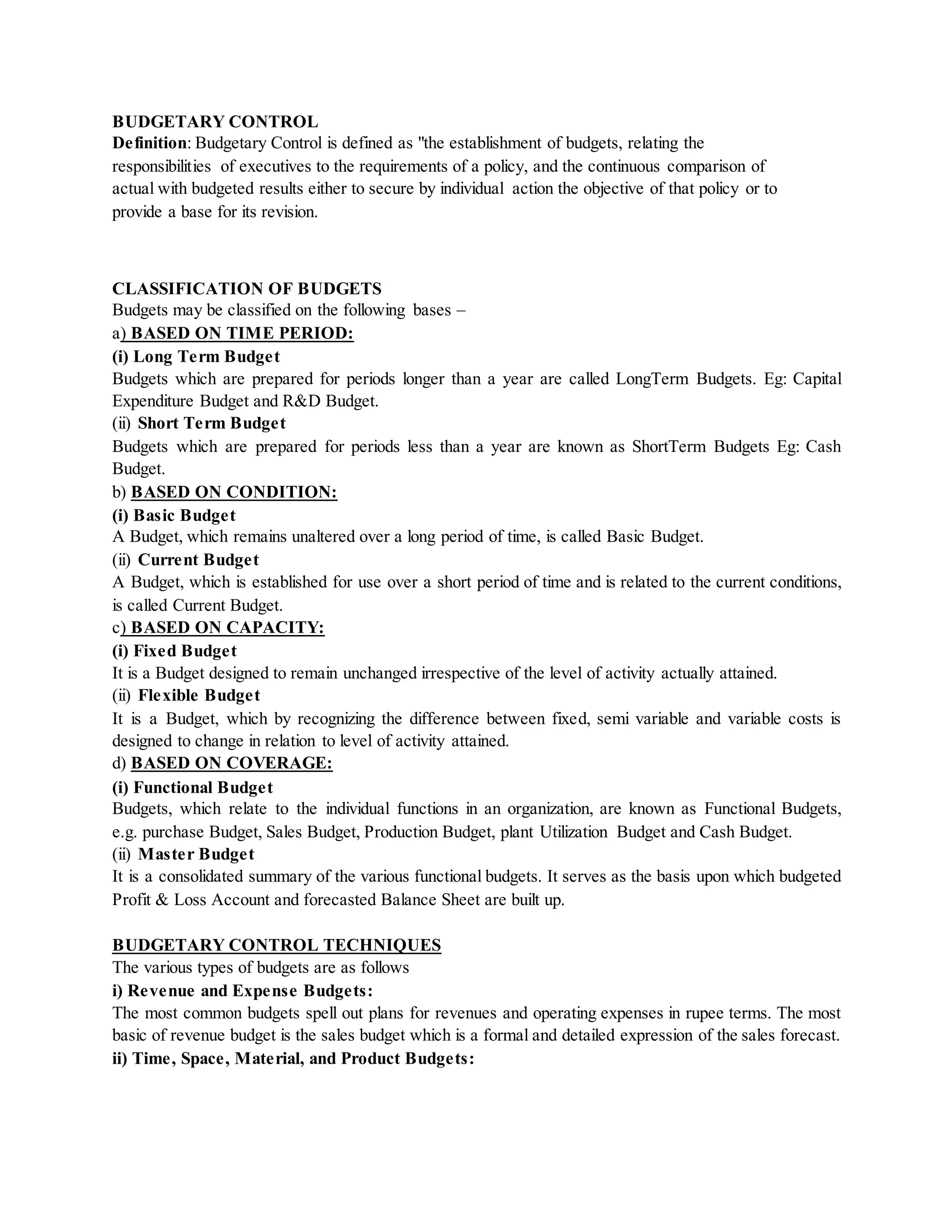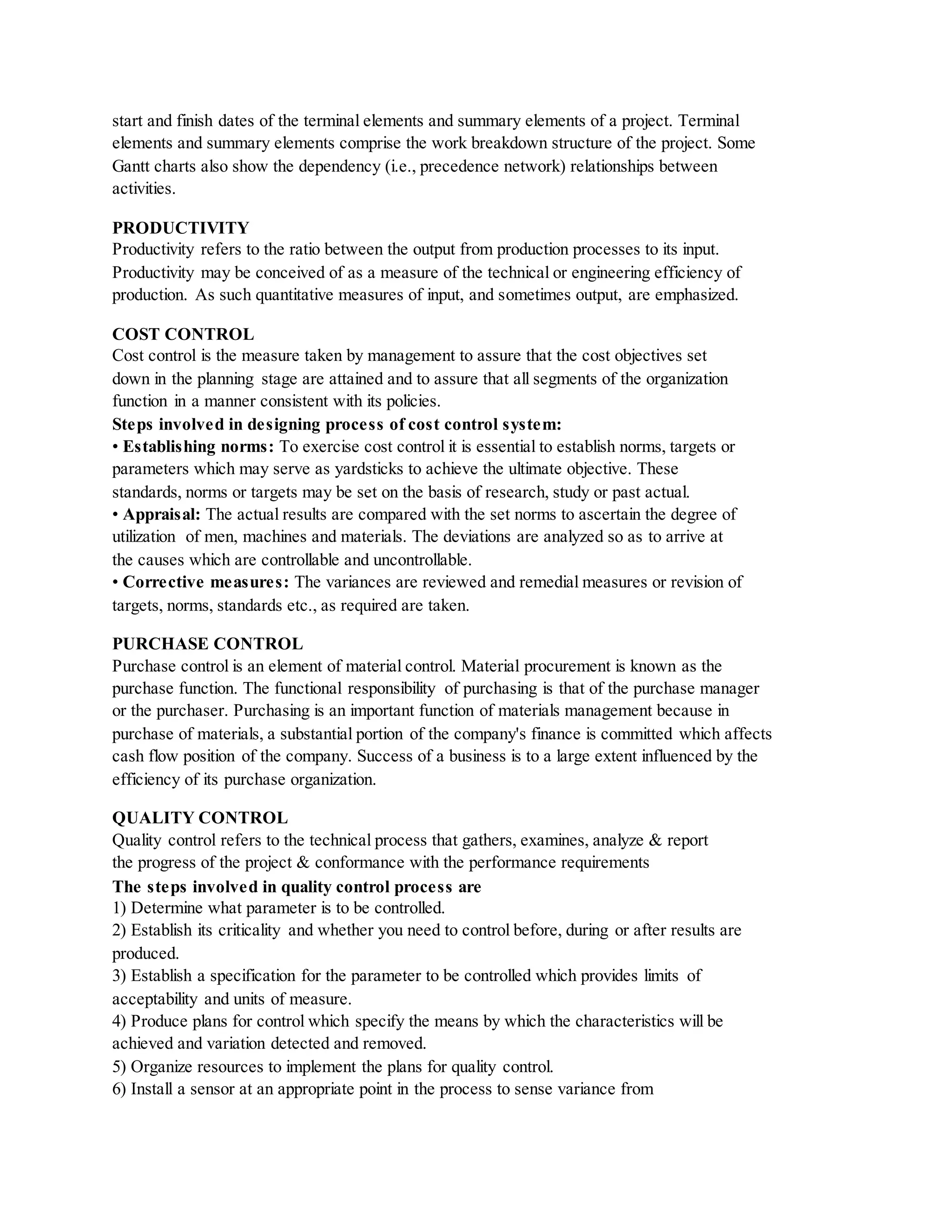The document provides definitions and explanations of key concepts related to controlling in management. It discusses the control process, which involves establishing standards, measuring performance, comparing performance to standards, and taking corrective actions. It also outlines various control techniques and systems managers can use, including budgetary control, non-budgetary techniques like statistical reports and audits, productivity measurement, cost control, quality control, and operational planning.





